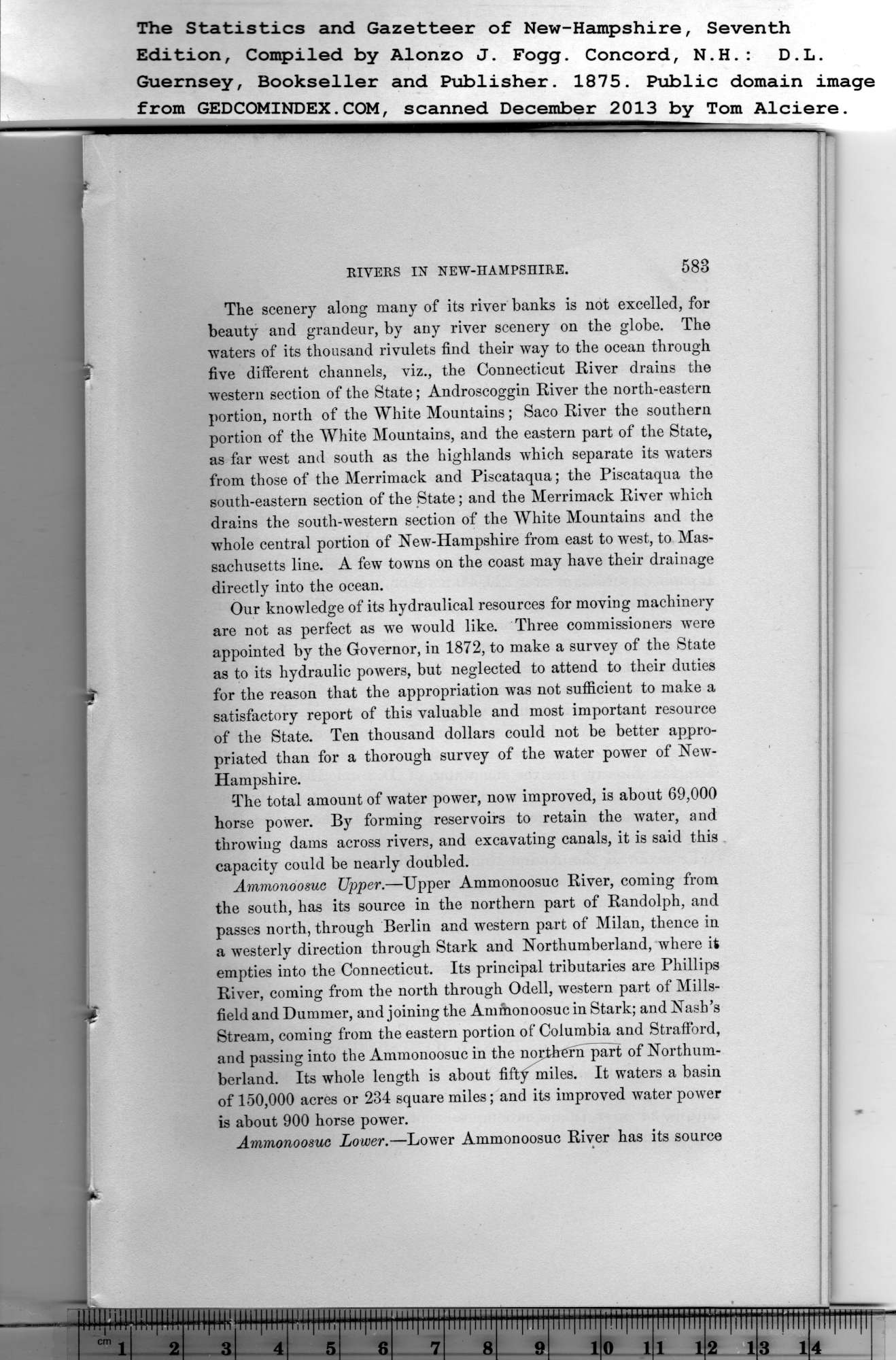|
RIVERS IN NEW-HAMPSHIRE. 583
The scenery along many of its river banks is not excelled, for
beauty and grandeur, by any river scenery on the globe. The
waters of its thousand rivulets find their way to the ocean through
five different channels, viz., the Connecticut River drains the
western section of the State; Androscoggin River the north-eastern
portion, north of the White Mountains; Saco River the southern
portion of the White Mountains, and the eastern part of the State,
as far west and south as the highlands which separate its waters
from those of the Merrimack and Piscataqua; the Piscataqua the
south-eastern section of the State; and the Merrimack River which
drains the south-western section of the White Mountains and the
whole central portion of New-Hampshire from east to west, to Mas-
sachusetts line. A few towns on the coast may have their drainage
directly into the ocean.
Our knowledge of its hydraulical resources for moving machinery
are not as perfect as we would like. Three commissioners were
appointed by the Governor, in 1872, to make a survey of the State
as to its hydraulic powers, but neglected to attend to their duties
for the reason that the appropriation was not sufficient to make a
satisfactory report of this valuable and most important resource
of the State. Ten thousand dollars could not be better appro-
priated than for a thorough survey of the water power of New-
Hampshire.
The total amount of water power, now improved, is about 69,000
horse power. By forming reservoirs to retain the water, and:
throwing dams across rivers, and excavating canals, it is said this
capacity could be nearly doubled.
Ammonoosue Upper.—Upper Ammonoosuc River, coming from
the south, has its source in the northern part of Randolph, and
passes north, through Berlin and western part of Milan, thence in
a westerly direction through Stark and Northumberland, where it
empties into the Connecticut. Its principal tributaries are Phillips
River, coming from the north through Odell, western part of Mills-
field and Dummer, and joining the Ammonoosuc in Stark; and Nash’s
Stream, coming from the eastern portion of Columbia and Strafford,
and passing into the Ammonoosuc in the noptb^fhTpart of Northum-
berland. Its whole length is about fifty miles. It waters a basin
of 150,000 acres or 234 square miles; and its improved water power
is about 900 horse power.
Ammonoosue Lower.—Lower Ammonoosuc River has its source
PREVIOUS PAGE ... NEXT PAGE
This page was written in HTML using a program written in Python 3.2
|
